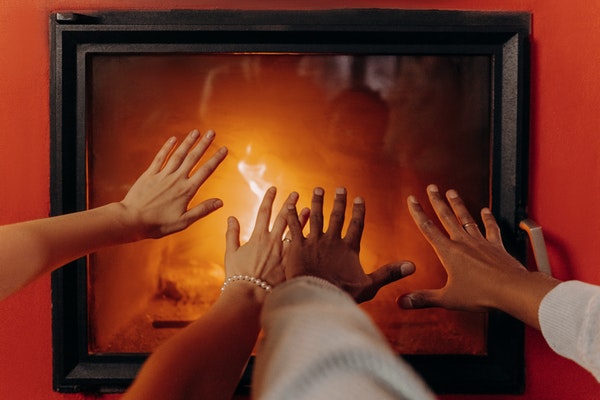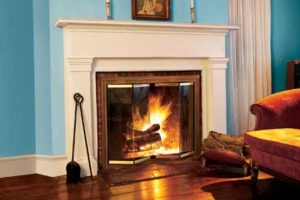High utility bills during winter months can often derail personal finances, setting back savings goals and creating situations where people struggle to get out of debt. Before this happens, invest in your home’s energy efficiency and benefit from lower utility bills. This series looks at ways to save money with weatherization. In Part II, we will review some of the ways to prepare the interior of your home for winter with some weatherization projects.
Save money this winter with these home weatherization improvements that add energy savings, warmth and value to your home.
Interior Weatherization Fixes
Inspect the Firebox and Flue System
Make sure that the firebox is clean of any soot or creosote and that there aren’t any cracks or voids that could cause a fire hazard. As for the flue system, if it’s cold despite the damper being closed, the damper itself may be warped, worn or rusted. Take these preventative weatherization steps to avoid getting deeper into credit card debt with repair costs.
Clean or Replace the Air Filter in Your Furnace
Save money by changing the air filter in your furnace. Proper filter maintenance can lead to better performance, efficiency and years that your furnace will be up and running. Stay on top of your filters for maximum efficiency and improved indoor air quality.
Examine Exposed Ducts
Don’t let your money fly through the air! Ducts in the attic, basement and crawl spaces can leak significant amounts of air, causing your utility bills to rise and create uneven temperatures throughout the home. Use sealant or metallic tape to plug up any leaks in the ducts and save money.
Flush the Hot Water Heater Tank
Flushing the hot water tank will provide some TLC to keep your system running efficiently, saving you money and headaches. No one likes a cold shower! Be sure to also check the pressure relief valve to make sure it’s in proper working order.
Insulate Pipes
Save money and inconvenience weatherizing your home’s pipes. Insulating pipes from freezing and potentially bursting is a great preventative measure. Insulated pipes will deliver hotter water and help converse water, saving you money all over the place. There are several different ways to insulate pipes – check around online for them.
Save Money with an Energy Audit
Consider having an energy audit performed on your home. The auditor will conduct various energy efficiency tests on your home, often for free. The audit can detect air leaks, insulation issues as well as check your furnace and appliances for efficiency. The analysis will show you the most cost effective improvements that you can make to your home.
If you do find yourself in an emergency weatherization scenario, make sure your budget has an emergency fund that is ready to cover any unexpected expenses and avoid getting into debt. Stay cozy and save money by taking the necessary weatherization steps toward energy efficiency.
Weatherization Myths
I Need Energy Efficient Windows
Not necessarily. According to EnergyFlower, “In general, windows only account for about 10% of your home’s heat loss. In comparison, walls and attic account for about 70% of your heat loss.” Your windows may not be the newest, but if they don’t have major air leakage, focus your attention on insulating your home instead of purchasing energy efficient windows.
Weatherization is Expensive
According to Bankrate.com, the idea that weatherization is expensive is a myth that people fall for a lot. Switching curtains for heavier drapes and winterizing ceiling fans are two budget-friendly weatherization suggestions. There are many other simple steps like this that we will cover next week. Programs and grants are also available to make energy efficient upgrades.
Tune in next week for tips on low-cost, energy savings ideas!
If you’re struggling to pay off debt, ACCC can help. Schedule a free credit counseling session with us today.






